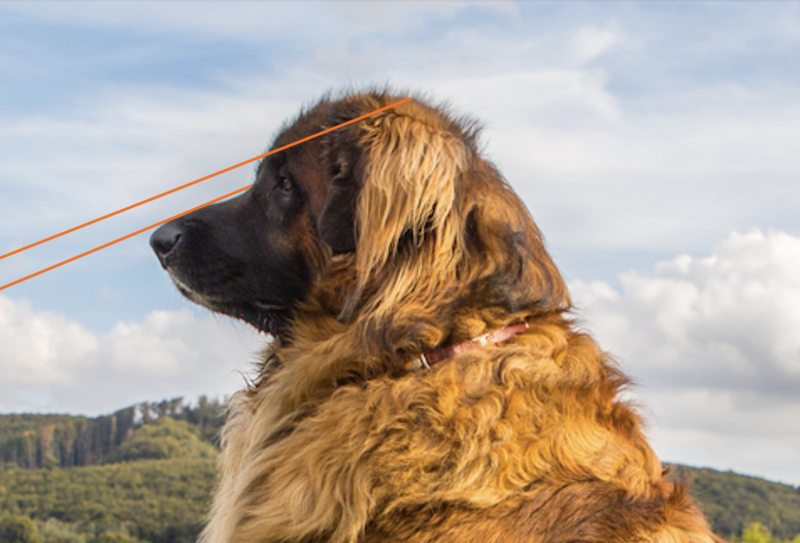
For those wanting to learn more about dogs by reading breed standards, a myriad of terms and phrases await — but also a bit of geometry. Breed standards use shapes to describe proportions of their respective breeds, degrees of angulation to describe the desired intersections of both front and rear assemblies, and the geometric alignment and symmetry between a dog’s muzzle and its skull when viewed in profile. With regards to that last sentence in italics, the most common language found in a standard has to do with “parallel lines or planes,” and it’s found in many standards, both as a desirable trait, and as a fault: In this post, we concentrate on the head and offer a few examples below:
- From the Komondor AKC standard: The top of the muzzle is straight and is parallel to the top of the skull;
- Giant Schnauzer: The top line of the muzzle is parallel to the top line of the skull;
- Berger Picard: Muzzle and topskull should be of equal length, and form parallel planes when viewed in profile,
- Swedish Vallhund: The top lines of the muzzle and skull are parallel to each other;
- Basset Hound: Viewed in profile the top lines of the muzzle and skull are straight and lie in parallel planes;
- In the Portuguese Podengo Pequeno, parallel planes in the back skull/muzzle are a fault
- From the Boston Terrier standard: The muzzle from stop to end of the nose is parallel to the top of the skull;
- Parson Russell Terrier: Flat with muzzle and back skull in parallel planes….
You get the idea.
For some of us, grasping the concept of what “parallel” actually means came from learning to drive a car, and more specifically, mastering parallel parking. Some of the cars in the photo below were parked by drivers who didn’t quite get the hang of it:

Photo by upyernoz/
Creative Commons Attribution 2.0
In parallel parking, the idea is to situate the car so that the long side of the parked car is lined up, or parallel, to the side of the road. But does this translate into evaluating a dog from outside a ring, or just looking at a dog standing on a grooming table? It’s not hard when you remember that parallel planes never meet or cross each other at any point. Ever. We’re going to use a detail of the Leonberger in the photo above to illustrate the point:

For as far as this dog can see, those lines will never meet or cross. They are parallel to each other just as the breed standard describes: “As seen from the side, the planes of muzzle and backskull are parallel.” We need only imagine two lines, one parallel to the skull, the other parallel to the muzzle, and extend each line out to, say, as far as your eye can see? If they never meet or cross, this is a dog whose muzzle and skull are in parallel planes. In case you’re wondering about where we started the line on the skull, we referred to the highest point of the skull at the back of the Leo’s head.
Image of Leonberger by Peter Josto/Shutterstock
